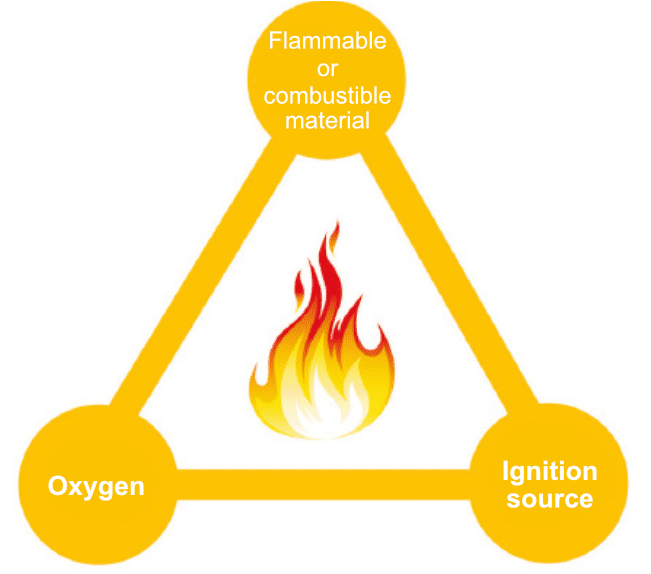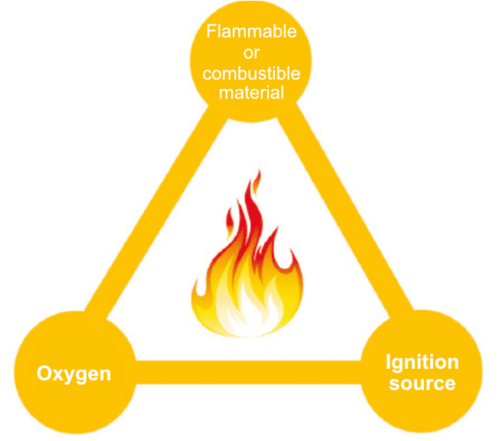What is a Hazardous Area?
A hazardous area is an area where flammable liquids, vapours, gases or combustible dusts are likely to occur in sufficient quantities to cause fire or explosion.
There are three basic conditions that must be satisfied to create a fire or explosion.
- Flammable or combustible material – such as flammable liquid, vapour or combustible dust must be present in sufficient quantity and concentration.
- Oxygen
- Ignition source
Hazardous area electrical equipment works by suppressing or separating one or more of these three components to avoid a fire or explosion. Where suppression cannot be done the use of explosion containment Ex d is used.

Ignition Sources
- Electric arc and sparks
- Flames
- Hot surfaces
- Electrostatic sparks
- Thermite sparks
- Mechanical friction
- Mechanical sparks produced by grinding
- Smouldering deposits
- Compression ignition
- Electromagnetic radiation
- Chemical reactions
- Ultrasonics
Selection of Electrical Equipment
There are important pieces of information required when selecting equipment for hazardous areas. These include:
- Zone classification
- Gas group
- Temperature or 'T' Rating
- IP Rating
- Application
IEC Standard & Certifications
IECEx is an internationally recognised scheme for the certification of hazardous area electrical equipment. The IECEx system is designed to facilitate international trade in equipment and services for use in hazardous areas, whilst maintaining the required level of safety.


Typical Hazardous Area Industries:
Gases and Vapours
- Oil refineries & chemical plants
- Offshore drilling rigs
- Spray booths
- Sewerage treatment plants
- Oxygen and acetylene
- Aircraft hangers
- LNG plants
- Wharves for petroleum & LNG vessels
- Paint manufacturers
- Distilling
- Laboratories & fume cupboards
Dust
- Food manufacturing
- Grain handling & storage
- Chemicals / fertiliser
- Plastics
- Wood / pulp / paper
- Milk powder
- Flour mills
- Pharmaceuticals
- Metal processing
- Recycling operations
- Fibreglass manufacturing
- Explosive factories

